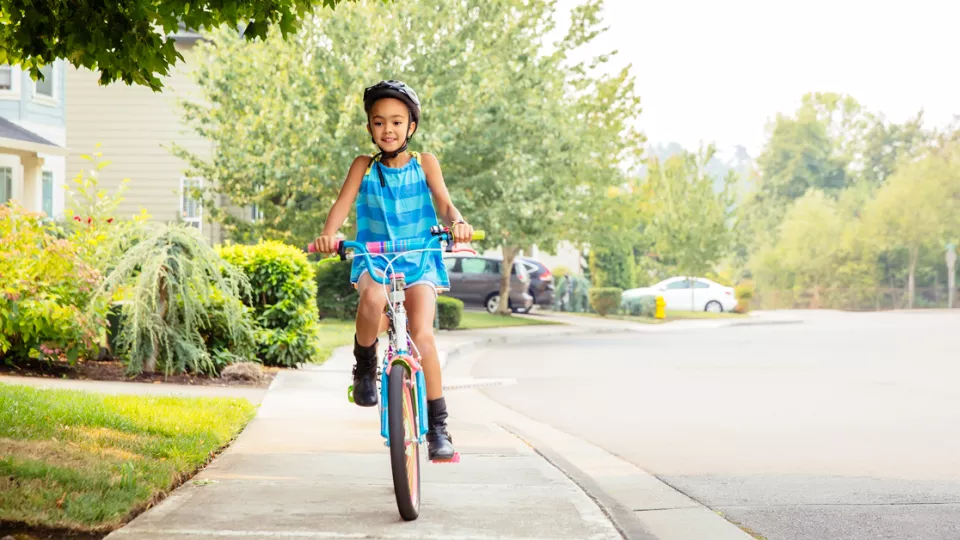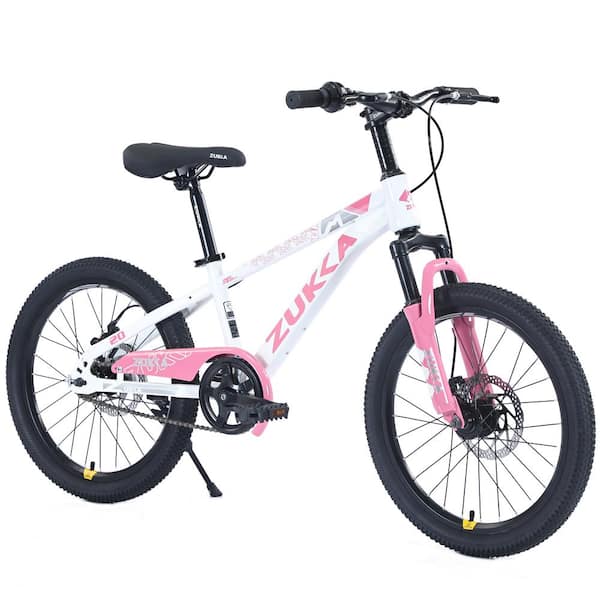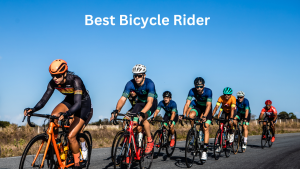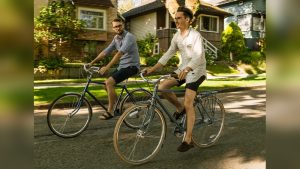Getting your child on a bike is an exciting milestone, but keeping them safe while they ride is even more important. If your little one is under 10, you might worry about how to protect them from accidents and teach good habits early on.
This guide is made just for you. You’ll discover simple, effective tips to make bicycling fun and safe for your child. By the end, you’ll feel confident knowing exactly how to keep your young rider secure every time they pedal away.
Let’s dive in and make every bike ride a happy and safe adventure for your kid.
Choosing The Right Bike
Choosing the right bike for kids under 10 is very important. A well-fitted bike helps children learn to ride safely and enjoy the experience. It also prevents accidents and discomfort. Parents should focus on size, safety features, and easy maintenance. These factors make riding safer and more fun for young riders.
Size And Fit
The bike must fit the child’s height and leg length. Kids should sit on the seat with their feet flat on the ground. This helps them stop safely and balance better. A bike too big or too small can cause falls and frustration. Check the wheel size. For most kids under 10, 12 to 16-inch wheels work best. Test the bike before buying to ensure comfort and control.
Safety Features
Safety should be a top priority. Look for bikes with easy-to-use brakes. Hand brakes and coaster brakes both work well for kids. Reflectors on the bike help make children visible in low light. Choose bikes with chain guards to protect little fingers from getting caught. Bright colors and sturdy frames add to safety and fun. A helmet must always be worn, no matter the bike.
Maintenance Basics
Simple maintenance keeps the bike safe and working well. Teach kids or parents to check tire pressure regularly. Tires should be firm, not flat or too hard. Clean the bike often to avoid rust and dirt build-up. Lubricate the chain to keep it smooth and quiet. Tighten loose bolts and screws to prevent accidents. Regular checks help the bike last longer and stay safe.

Credit: www.chla.org
Essential Safety Gear
Keeping children safe while biking is a top priority. Essential safety gear protects kids from injuries. Proper gear makes riding fun and secure. Parents should choose the right equipment carefully. Here are the key items every child needs before riding.
Helmet Selection
A good helmet fits snugly on the head. It should cover the forehead and sit level. Look for helmets with a safety certification sticker. Lightweight helmets increase comfort and encourage wearing. Adjust the straps so the helmet stays in place. Replace helmets after any crash or impact.
Protective Pads
Elbow and knee pads help prevent scrapes and bruises. Choose pads with soft, breathable materials for comfort. Pads should fit well without slipping or pinching. Wrist guards add extra protection for falls. Teach kids to wear pads every time they ride.
Bright Clothing
Bright colors improve visibility to drivers and others. Neon or fluorescent shirts and jackets work best. Reflective strips or stickers add safety in low light. Avoid dark or dull clothing that blends into the background. Bright clothing helps keep kids seen and safe.
Safe Riding Practices
Teaching kids safe riding practices helps them enjoy biking and stay protected. These practices build good habits early. Kids learn to watch the road, use signals, and avoid dangers. Safe riding makes biking fun and stress-free for parents and children.
Simple rules keep young riders alert and confident. These tips focus on clear hand signals, staying visible, and avoiding distractions. Each step helps kids understand how to ride safely in different situations.
Proper Hand Signals
Hand signals show other riders and drivers what the child will do next. Kids should use their left hand to signal turns and stops. Point left for a left turn. Point right for a right turn. Hold the hand up to stop or slow down. Practicing these signals makes riding safer on streets and paths.
Staying Visible
Bright clothes and helmets help kids stand out. Reflective gear works well in low light. Bikes can have lights or reflectors too. Riding where drivers see them reduces accidents. Teach kids to ride where they are easy to notice.
Avoiding Distractions
Riding needs full attention. Kids should not use phones or listen to music while biking. Watching the road and surroundings is key. Staying alert helps them react quickly to dangers. Remind kids to focus on riding only.

Credit: www.homedepot.com
Supervised Riding Areas
Supervised riding areas offer a safe space for kids under 10 to enjoy bicycling. These places help parents watch their children closely while they ride. Kids can learn biking skills and have fun without many risks.
Choosing the right area is key. It should be quiet, free from busy roads, and easy to watch from a distance. Safe spots reduce the chance of accidents and build kids’ confidence on the bike.
Choosing Safe Routes
Pick routes that are flat and clear of obstacles. Avoid places with sharp turns or steep hills. Choose paths with good visibility so adults can see kids at all times. Short routes work best for young riders to keep them focused and safe.
Park And Trail Options
Parks with paved bike paths are great for young riders. These areas usually have less traffic and are designed for recreational use. Trails in parks often have signs and markings to guide kids safely. Look for parks with wide paths and soft ground around the trails.
Avoiding Traffic
Keep kids away from busy streets and intersections. Choose areas where cars do not drive fast or often. Riding near parked cars or in parking lots can be dangerous. Safe riding means staying far from moving vehicles and crowded roads.
Teaching Road Rules
Teaching road rules to children under 10 is crucial for their safety on bicycles. Kids must understand how to act on streets and paths. Clear instructions help them feel safe and confident. Start with simple, easy rules. Repeat often to help them remember. Practice together in safe places before going to busy roads.
Basic Traffic Signs
Introduce common traffic signs children will see while biking. Show stop signs, yield signs, and pedestrian crossings. Explain each sign’s meaning in simple words. Use pictures or real signs for better understanding. Teach kids to always obey these signs. Knowing signs prevents accidents and confusion.
Crossing Streets Safely
Teach kids to stop at the curb before crossing. Look left, right, and left again. Listen for cars or bikes. Only cross when the road is clear. Use crosswalks and pedestrian signals if available. Practice these steps together at quiet streets. Safe crossing habits save lives.
Riding With Others
Riding with friends or family is fun but needs rules. Teach kids to ride in single file on roads. Keep a safe distance between bikes. Use hand signals to show turns or stops. Remind kids to listen to adults or group leaders. Group riding is safer with clear communication.
Emergency Preparedness
Emergency preparedness is key for safe bicycling with kids under 10. Being ready helps reduce panic during accidents. It also ensures quick and proper care for your child. Teach your child basic safety steps and keep important items handy. This helps make rides safer and more fun.
Identifying Hazards
Teach children to spot dangers early. Watch out for uneven roads, loose gravel, and wet leaves. Cars, pedestrians, and pets can also cause accidents. Encourage kids to look ahead and slow down near hazards. Practice safe routes before riding alone. Knowing risks helps prevent many crashes.
What To Do After A Fall
Stay calm and check your child carefully. Look for cuts, bruises, or pain. Clean any wounds with water and apply a bandage. If your child feels dizzy or cannot move, call for help. Comfort your child and avoid quick movements. Teach kids to stay still and wait for an adult.
Contact Information
Always carry your child’s emergency contact details. Include parents’ phone numbers and doctor’s information. Teach your child how to say their name and address. Consider a wristband with contact info for younger kids. Easy access to contacts speeds up help when needed.

Credit: www.walmart.com
Frequently Asked Questions
What Safety Gear Is Essential For Kids Under 10?
Kids under 10 must wear a properly fitted helmet. Knee and elbow pads add extra protection. Bright clothing helps visibility. Reflectors and gloves improve grip and safety during rides.
How To Teach Kids Under 10 To Ride Safely?
Start in a flat, safe area without traffic. Teach basic balance and braking skills first. Emphasize looking both ways before crossing streets. Always supervise young kids closely during rides.
What Are Safe Places For Kids To Bike?
Parks, bike paths, and quiet residential streets are ideal. Avoid busy roads and highways. Choose areas with smooth surfaces and good visibility. Designated bike lanes enhance safety for young riders.
How To Maintain Kids’ Bikes For Safety?
Regularly check tire pressure and brakes. Ensure handlebars and seats are secure. Clean the bike to prevent rust. Replace worn parts promptly to avoid accidents. Proper maintenance keeps the bike safe and reliable.
Conclusion
Keeping kids safe while bicycling is very important. Always use helmets and proper gear. Teach children to watch for cars and obey traffic rules. Choose safe places like parks or quiet streets to ride. Supervise young riders closely to prevent accidents.
Practice helps build confidence and skills. Safe biking creates fun and healthy habits. Enjoy every ride with care and attention. Safety first, happiness follows.


